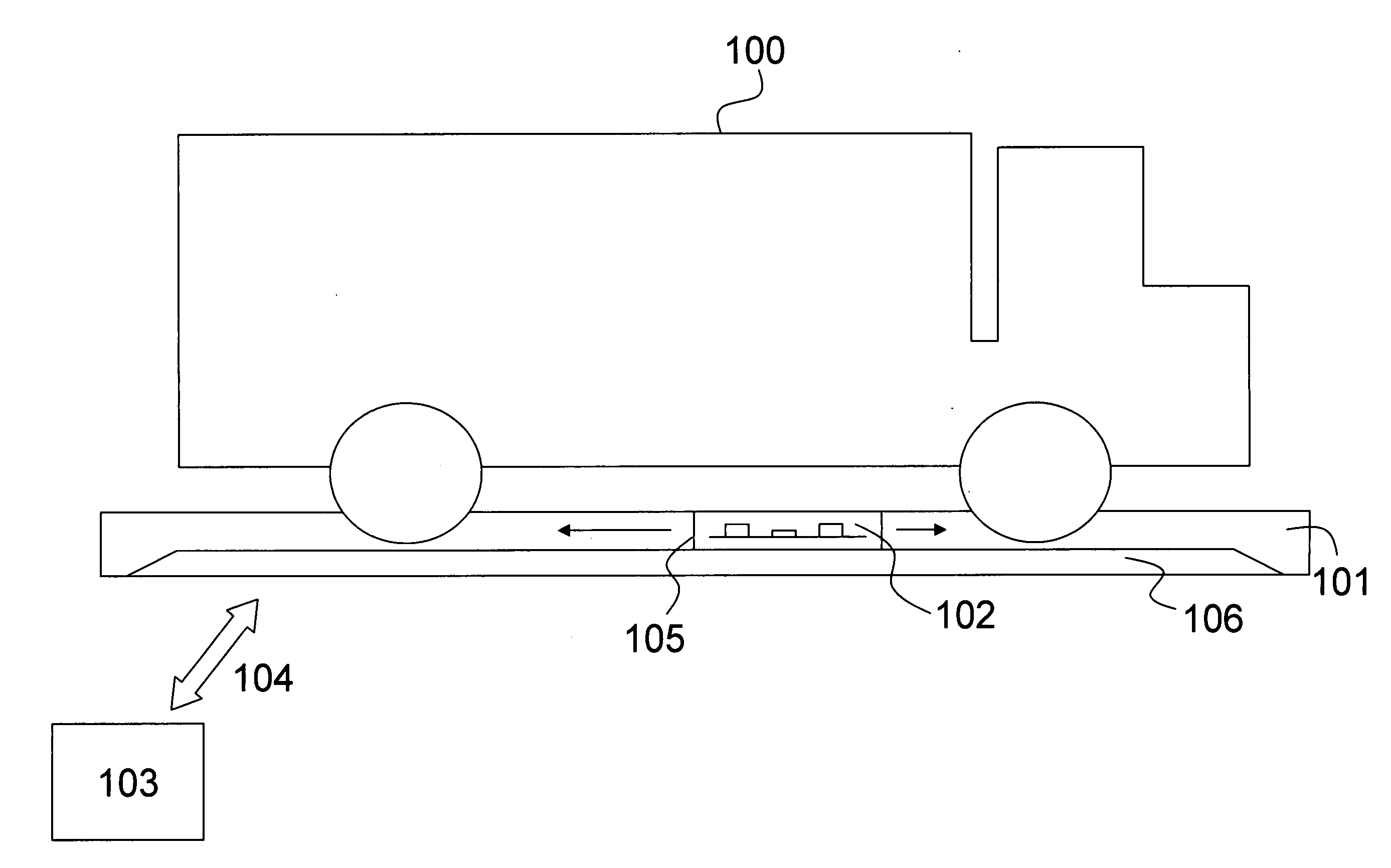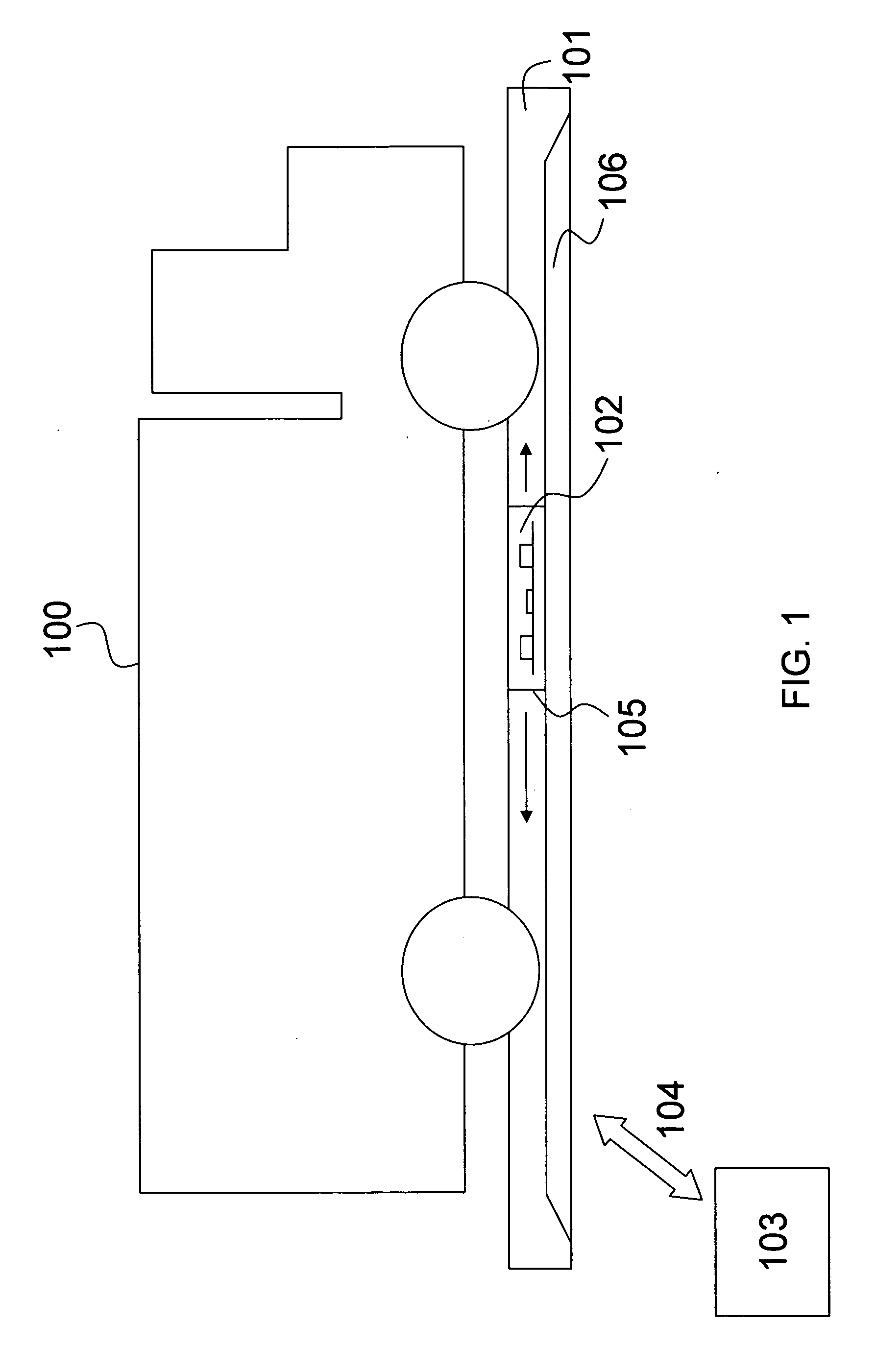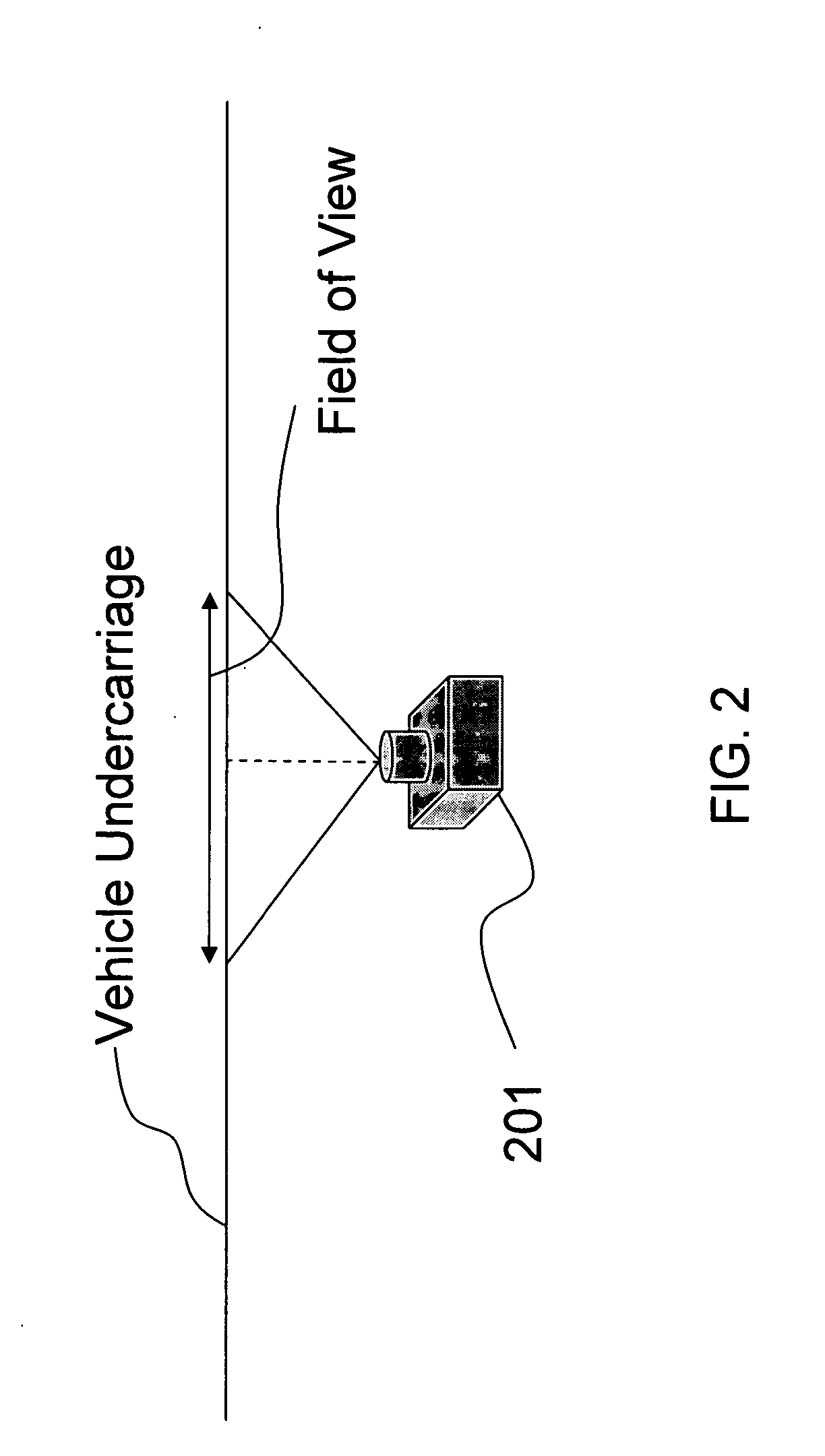Under vehicle inspection system
a vehicle inspection and vehicle technology, applied in the field of vehicle inspection systems, can solve the problems of inconvenient detection of suspicious objects, so as to minimize the risk of physical harm, reliable and efficient detection of suspicious objects
- Summary
- Abstract
- Description
- Claims
- Application Information
AI Technical Summary
Benefits of technology
Problems solved by technology
Method used
Image
Examples
Embodiment Construction
[0043] Exemplary embodiments of the invention are described below with reference to the corresponding drawings. These embodiments are presented as teaching examples. The actual scope of the invention is defined by the claims that follow.
[0044] Selected embodiments of the invention provide an under vehicle inspection system comprising a single camera adapted to capture a full width image of a vehicle undercarriage by performing a single scan, or pass, along the length of the vehicle undercarriage. The camera is typically mounted in a camera carriage adapted to move along the length of the vehicle undercarriage on a track associated with a vehicle undercarriage inspection platform.
[0045] The term “vehicle undercarriage inspection platform” (or “platform” for short) is used throughout this description to denote any physical structure capable of receiving and / or supporting a vehicle, in whole or in part, in such a manner that the camera may view a significant portion of the vehicle's ...
PUM
 Login to View More
Login to View More Abstract
Description
Claims
Application Information
 Login to View More
Login to View More - R&D
- Intellectual Property
- Life Sciences
- Materials
- Tech Scout
- Unparalleled Data Quality
- Higher Quality Content
- 60% Fewer Hallucinations
Browse by: Latest US Patents, China's latest patents, Technical Efficacy Thesaurus, Application Domain, Technology Topic, Popular Technical Reports.
© 2025 PatSnap. All rights reserved.Legal|Privacy policy|Modern Slavery Act Transparency Statement|Sitemap|About US| Contact US: help@patsnap.com



